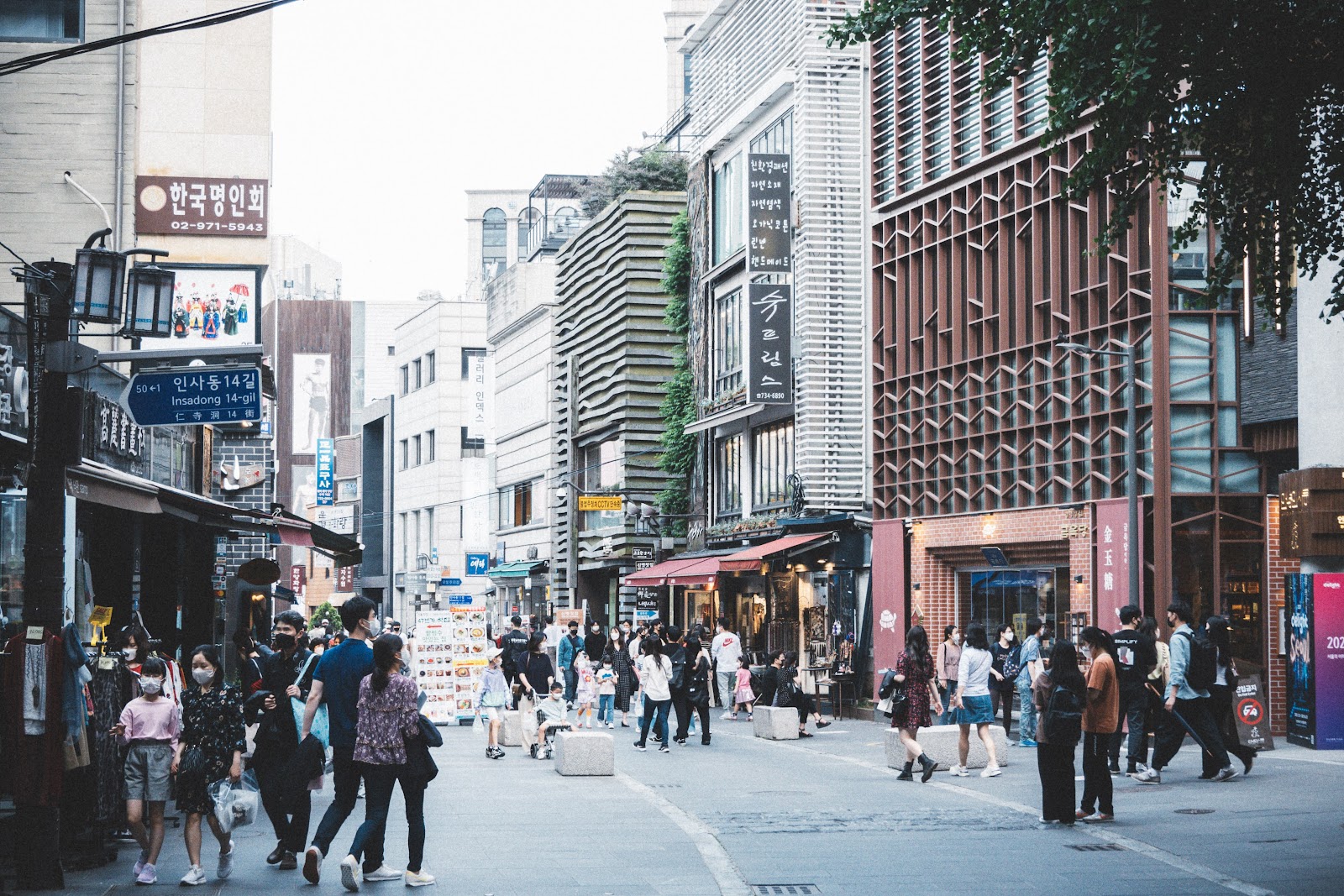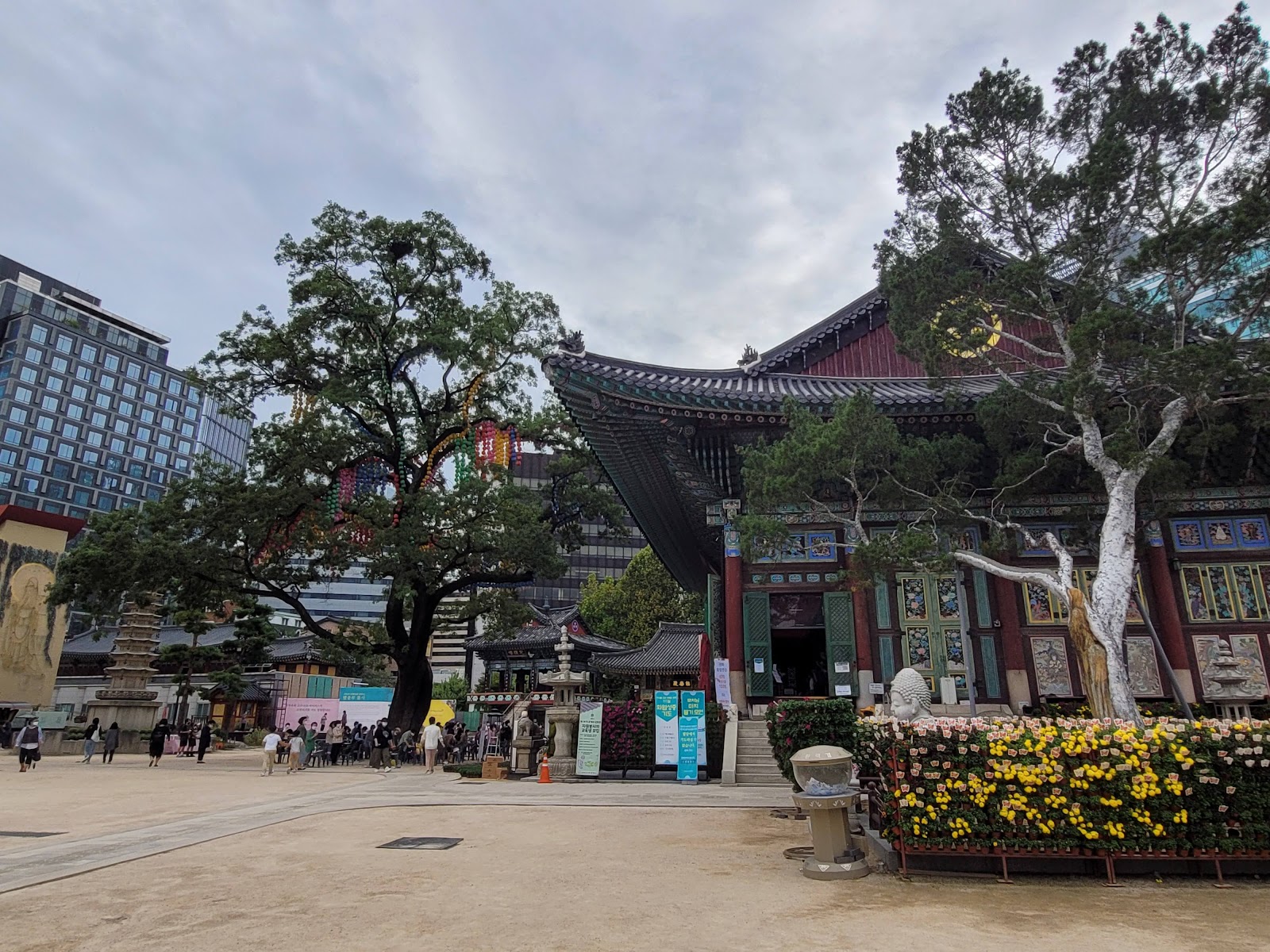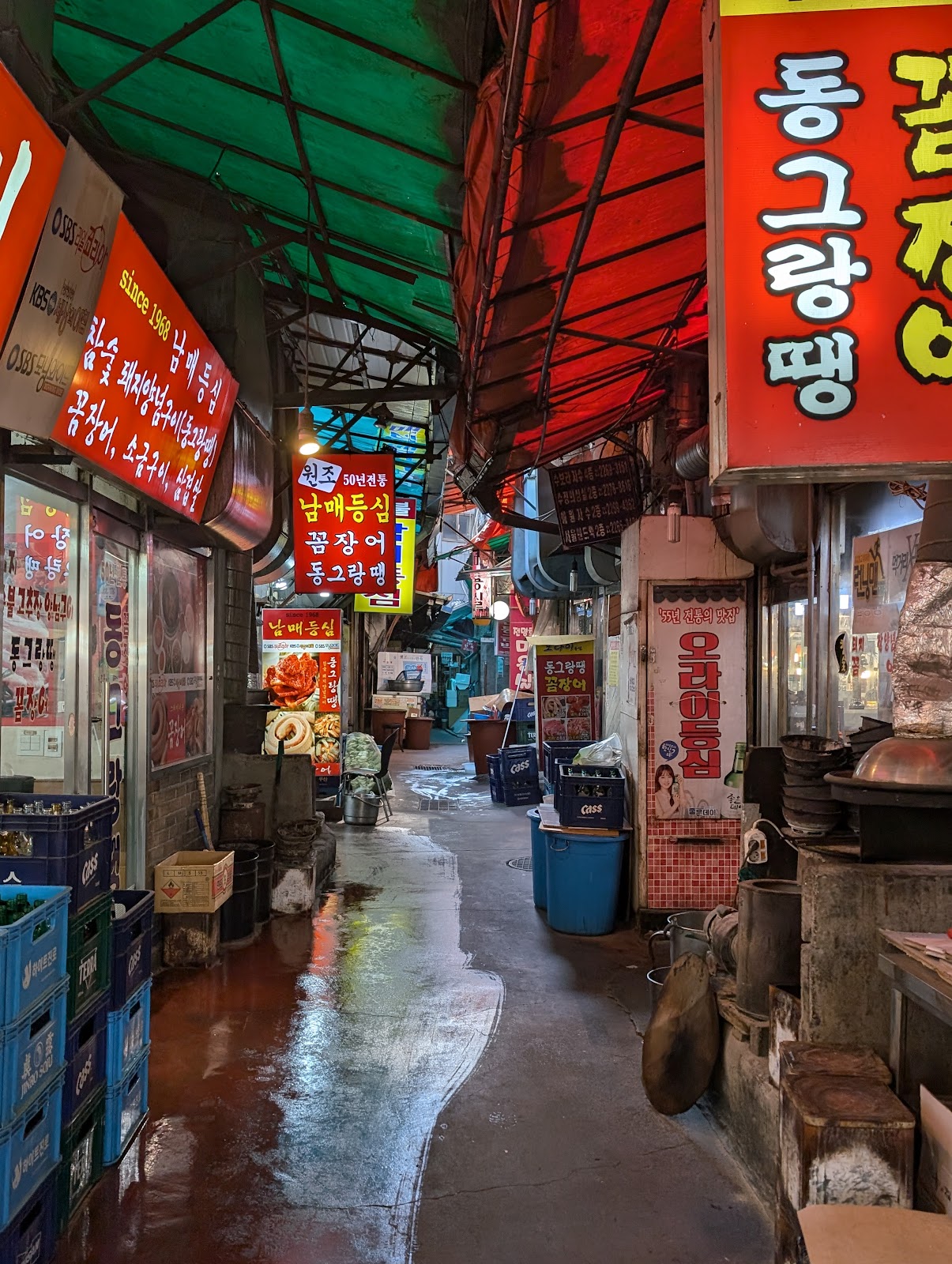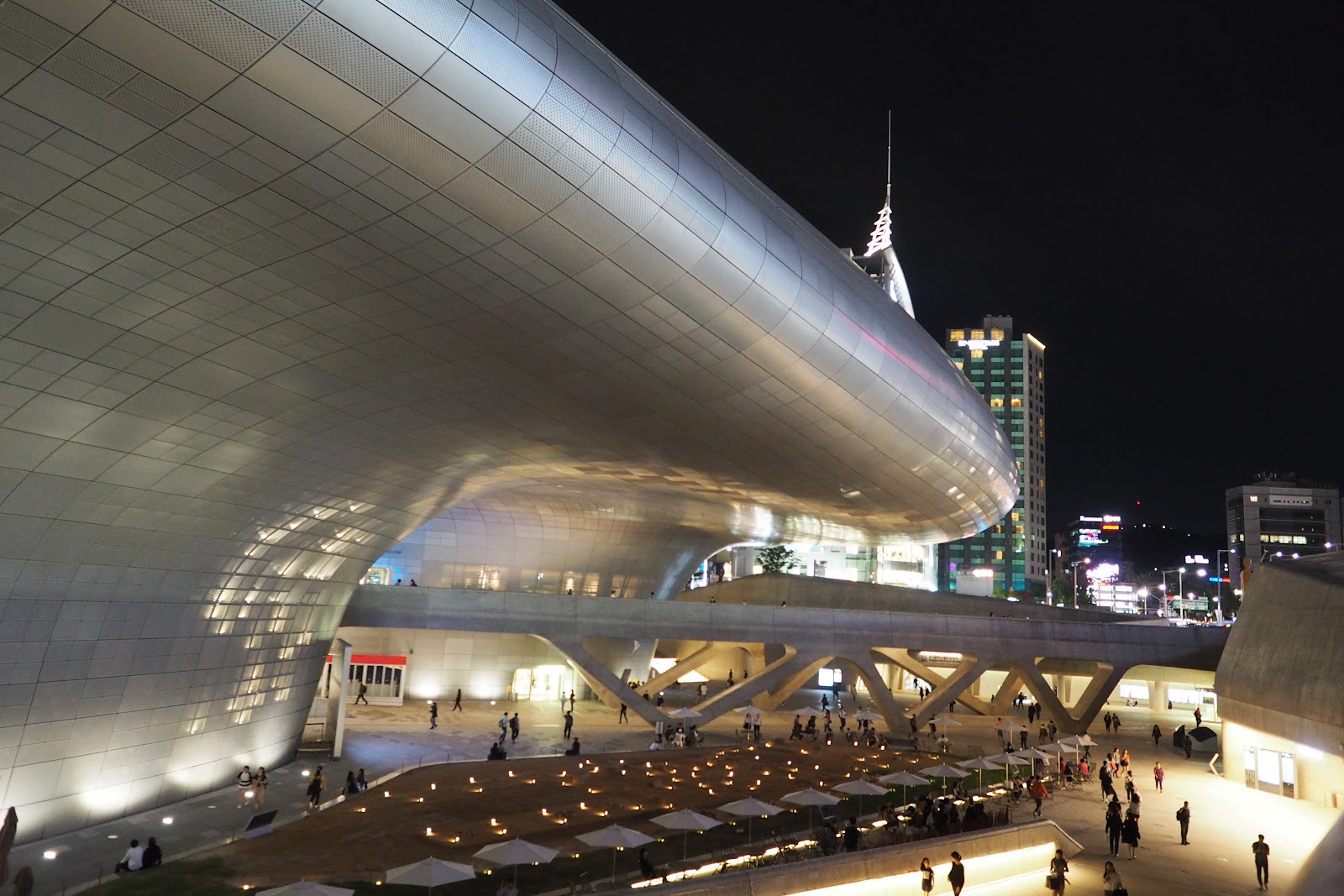Seoul: A Journey Through Time
Embark on a captivating journey through Seoul's history and culture with our free walking tour, revealing hidden gems and iconic landmarks along the way.
Time
3 Hours
Stops
9 Places
Distance
?
Gyeongbokgung Palace
As the largest of the Five Grand Palaces built during the Joseon Dynasty, Gyeongbokgung Palace offers a stunning introduction to Seoul's rich history and traditional architecture.

Gyeongbokgung Palace (Source: Google Maps)
Gyeongbokgung Palace, built in 1395, is the largest of the Five Grand Palaces of the Joseon Dynasty. It served as the main royal palace and is renowned for its stunning architecture and historical significance. The palace complex features beautiful gardens, impressive gates, and the National Palace Museum of Korea. The iconic Geunjeongjeon Hall, where the king held court, showcases traditional Korean architectural elements, including intricate woodwork and tiled roofs. The Changing of the Guard ceremony, held at the main gate, attracts many visitors, providing a glimpse into Korea's royal history. Gyeongbokgung stands as a symbol of resilience, having been restored after destruction during the Japanese occupation and the Korean War.
National Folk Museum of Korea
Located within the grounds of Gyeongbokgung Palace, this museum provides a deep dive into Korean cultural history with its extensive collection of artifacts.

National Folk Museum of Korea (Source: Google Maps)
The National Folk Museum of Korea, located within Gyeongbokgung Palace, is dedicated to preserving and showcasing Korean cultural history. Established in 1945, it houses an extensive collection of artifacts that illustrate the daily lives, customs, and traditions of the Korean people throughout history. The museum is divided into three main exhibition halls, focusing on the history of Korean life, the development of folk culture, and the interaction between nature and humanity. Visitors can explore various displays, including traditional clothing, tools, and household items, as well as engaging exhibitions that highlight seasonal festivals and agricultural practices. The museum serves as an educational resource, fostering a deeper understanding of Korea's rich heritage and cultural identity.
Bukchon Hanok Village
Just a short walk from Gyeongbokgung, this traditional Korean village showcases beautifully preserved hanoks (traditional Korean houses) and offers a glimpse into Seoul's past.

Bukchon Hanok Village (Source: Google Maps)
Bukchon Hanok Village is a traditional Korean village located between Gyeongbokgung and Changdeokgung Palaces, showcasing a unique collection of hanoks—traditional Korean houses. This historic area dates back to the Joseon Dynasty and offers visitors a glimpse into Seoul's past through its well-preserved architecture. The village features narrow alleys, charming courtyards, and picturesque views of the surrounding palaces and modern cityscape. Many of the hanoks are still inhabited, creating a living history experience. Visitors can explore cultural centers, workshops, and galleries that focus on traditional crafts, such as pottery and calligraphy. Bukchon Hanok Village embodies the harmony between tradition and modernity, making it a significant cultural landmark in Seoul.
Changdeokgung Palace
Known for its Secret Garden, Changdeokgung Palace is a UNESCO World Heritage site and an exemplar of Korean palace architecture harmoniously integrated with its natural surroundings.

Changdeokgung Palace (Source: Google Maps)
Changdeokgung Palace, a UNESCO World Heritage site, is renowned for its exquisite architecture and harmonious integration with nature. Built in 1405, it served as a secondary royal palace during the Joseon Dynasty. The palace is famous for its Secret Garden, a serene landscape that reflects the principles of traditional Korean garden design, emphasizing balance and tranquility. The garden features beautiful ponds, pavilions, and a variety of flora, providing a peaceful retreat for the royal family. The main buildings of the palace, such as Injeongjeon Hall, showcase classic Korean architectural elements, including elevated wooden structures and intricate roof designs. Changdeokgung represents the pinnacle of Korean palace architecture and is a testament to the cultural values of the Joseon era.
Insadong Street
A vibrant cultural district, Insadong is famous for its traditional tea houses, art galleries, and shops selling Korean crafts and antiques.

Insadong Street (Source: Google Maps)
Insadong Street is a vibrant cultural district in Seoul, known for its rich artistic heritage and traditional atmosphere. It is a hub for both locals and tourists, offering a delightful blend of old and new. The street is lined with traditional tea houses, art galleries, and shops selling Korean crafts, antiques, and souvenirs. Visitors can experience traditional Korean tea ceremonies, explore contemporary art exhibitions, and discover unique handmade items. Insadong also hosts various cultural events and festivals, celebrating Korean arts and crafts. The area is steeped in history, having been a center for scholars and artists during the Joseon Dynasty. Insadong serves as a focal point for cultural exchange, showcasing the depth of Korean culture and creativity.
Jogyesa Temple
As the chief temple of the Jogye Order of Korean Buddhism, Jogyesa Temple is a serene spot amidst the bustling city, offering insight into Korea's spiritual traditions.

Jogyesa Temple (Source: Google Maps)
Jogyesa Temple is the chief temple of the Jogye Order of Korean Buddhism, located in the heart of Seoul. Established in 1910, it serves as a spiritual center for practitioners and offers insight into Korean Buddhist traditions. The temple is known for its serene atmosphere, colorful lanterns, and beautiful architecture, featuring traditional wooden structures adorned with intricate carvings. The main hall, Daeungjeon, houses a large statue of Buddha and is a focal point for worship and meditation. Throughout the year, Jogyesa hosts various ceremonies and festivals, including the Lotus Lantern Festival, which celebrates the birth of Buddha. The temple provides a tranquil escape from the bustling city and invites visitors to explore the spiritual and cultural dimensions of Korean Buddhism.
Cheonggyecheon Stream
This modern public recreation space is a 10.9 km-long, revitalized stream that runs through downtown Seoul, providing a peaceful escape in the heart of the city.

Cheonggyecheon Stream (Source: Google Maps)
Cheonggyecheon Stream is a modern public recreation space that runs through downtown Seoul, revitalized from a previously covered waterway. Stretching 10.9 km, it offers a serene escape amidst the urban landscape. The stream features beautifully landscaped pathways, bridges, and art installations, attracting both locals and tourists. Completed in 2005, the restoration project aimed to improve the environment and enhance the quality of life in the city. Cheonggyecheon is not only a picturesque spot for leisurely walks, but it also serves as a venue for various cultural events and festivals throughout the year. The stream symbolizes Seoul's commitment to sustainability and urban renewal, blending nature with the city's modern development.
Gwangjang Market
One of Korea's oldest traditional markets, Gwangjang Market is the perfect place to experience authentic Korean street food and immerse yourself in local culture.

Gwangjang Market (Source: Google Maps)
Gwangjang Market, one of Korea's oldest traditional markets, is a bustling hub of local culture and cuisine. Established in 1905, it is famous for its vibrant atmosphere and diverse offerings, particularly its street food. Visitors can indulge in authentic Korean dishes, such as bindaetteok (mung bean pancakes), bibimbap, and various types of kimbap. The market is also known for its textiles and handmade goods, with numerous stalls selling traditional clothing, linens, and crafts. Gwangjang Market provides an immersive experience into Korean daily life, where visitors can interact with friendly vendors and sample a variety of flavors. The market plays a vital role in preserving Korea's culinary heritage and serves as a popular destination for food enthusiasts.
Dongdaemun Design Plaza (DDP)
Concluding the tour, the futuristic Dongdaemun Design Plaza is an architectural marvel that hosts exhibitions and events, symbolizing Seoul's blend of tradition and modernity.

Dongdaemun Design Plaza (DDP) (Source: Google Maps)
Dongdaemun Design Plaza (DDP) is a futuristic architectural marvel in Seoul, designed by renowned architect Zaha Hadid. Opened in 2014, it serves as a cultural hub for design, fashion, and art. The plaza features a unique, flowing structure with metallic surfaces and organic shapes, symbolizing the fusion of tradition and modernity in Seoul. DDP hosts various exhibitions, fashion shows, and events, attracting creative minds and visitors alike. The surrounding area is a vibrant shopping district, known for its 24-hour markets and fashion outlets. DDP is not only a landmark of contemporary architecture but also a symbol of Seoul's innovative spirit and commitment to design and culture.

Your travels, your rules.
Create your own Free Walking Tours.
Set your preferences, distances and anything you want to do or see.
Completely free, no payment required.